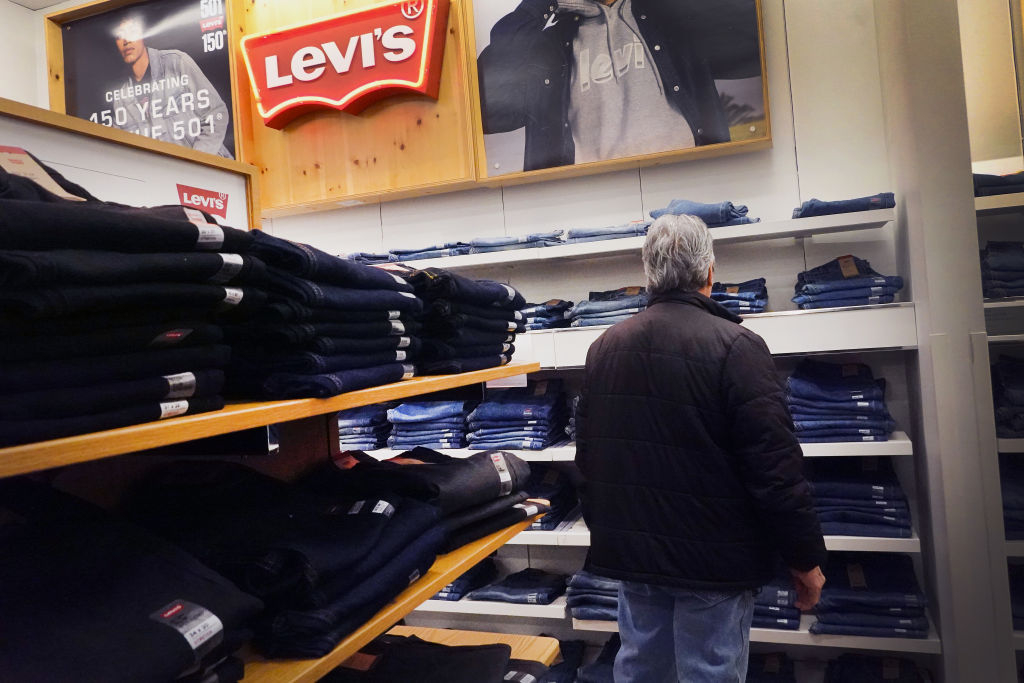Wall Street has high hopes for Levi Strauss & Co.
Levi’s, which posted third-quarter earnings results on Wednesday, back-pedaled on its full-year outlook, forecasting a 1 percent net revenue gain versus prior estimates of an increase between 1 percent to 3 percent. But Wall Street analysts didn’t seem too concerned. If anything, they see a bright future for the denim brand, particularly now that Levi’s has decided to sell its Docker’s brand, which had dragged down earnings.
More from Sourcing Journal
Dockers was created by Levi’s in 1986 to give its customers a khaki option as it sought to diversify its core denim base. Now, with Dockers—and khaki’s—falling out of favor, as well as the new CEO Michelle Gass leading the charge, Levi’s is all in on denim. The company is also growing its Beyond Yoga business.
Gass has placed a greater focus on building out the denim brand’s direct-to-consumer (DTC) business, and international is also expected to play a role in the company’s growth.
Growing both DTC and international works out just fine with analysts.
“We believe the market doesn’t fully appreciate Levi’s ability to evolve into a global, multichannel, lifestyle business for both men and women from what traditionally was a North America, wholesale, men’s, denim brand,” wrote Jay Sole, UBS retail and softlines analyst, in a report. While there are short-term headwinds related to China, Mexico, and the Dockers brand, Sole noted that the core Levi’s brand continues to perform very well, accelerating to 5 percent global sales growth in the third quarter.
Drivers of Levi’s DTC business include positive brick-and-mortar store comps, solid new store productivity, and 18 percent digital growth. “Plus, Levi’s DTC channel margins are starting to expand. We believe these data points show the strategy is working and the company is still in the early stages of its transformation,” Sole concluded. Despite the headwinds that resulted in the company lowering its fourth quarter outlook, Sole expects sales in North America and Europe to remain strong.
For the third quarter ended Aug. 25, net income rose 116 percent to $20.7 million on a 0.4 percent revenue gain to $1.52 billion. Wholesale sales were down 6 percent, while DTC including e-commerce and the company’s stores posted a revenue increase of 10 percent. In the Americas, revenues slipped 1 percent, but were up 6 percent in Europe and flat in Asia.
Levi’s kicked off a new campaign with Beyoncé on Monday that’s expected to provide a fourth quarter boost, as well as help the brand move closer to its goal of doubling its women’s business.
Telsey Advisory Group’s chief investment officer Dana Telsey pointed out that the firm expects revenue and profitability acceleration in the fourth quarter, driven by the core Levi’s brand. Gross margin for the year is expected to expand 270 basis points, up from 180 basis points previously. She also views the challenges as a “near-term” issue, and maintained her “Outperform” rating on the company’s shares.
“We continue to see Levi as well-positioned, benefiting from a stabilizing U.S. denim market,” she said, adding that strong DTC trends with an accelerating women’s denim business and a more focused assortment, with an increased concentration on newness, should help fuel future growth prospects.
Retail and luxury analyst Oliver Chen at TD Securities (USA) also has a “Buy” rating on shares of Levi. “Longer term, we believe that building a greater DTC store and e-commerce presence will require greater inventory management agility,” Chen said, adding that he also sees “strong evidence” of Levi’s progress as a lifestyle head-to-toe brand. While the men’s bottoms business could benefit from a greater innovation pipeline, Chen said Levi’s women business grew 11 percent year-over-year, with tops up 8 percent year-over-year.
“We believe Levi’s is in the early innings of a favorable denim cycle of new fits and styles driven by younger, fashion-forward consumers,” Chen concluded. Other contributors to Levi’s growth include international expansion driven by mid-single-digit to high-single-digit revenue growth in Europe and Asia and increased exposure to higher growth and margin categories that include tops, women’s, and activewear, the analyst said.
Read the full article here
















